Why you can trust Tom's Hardware
Rendering
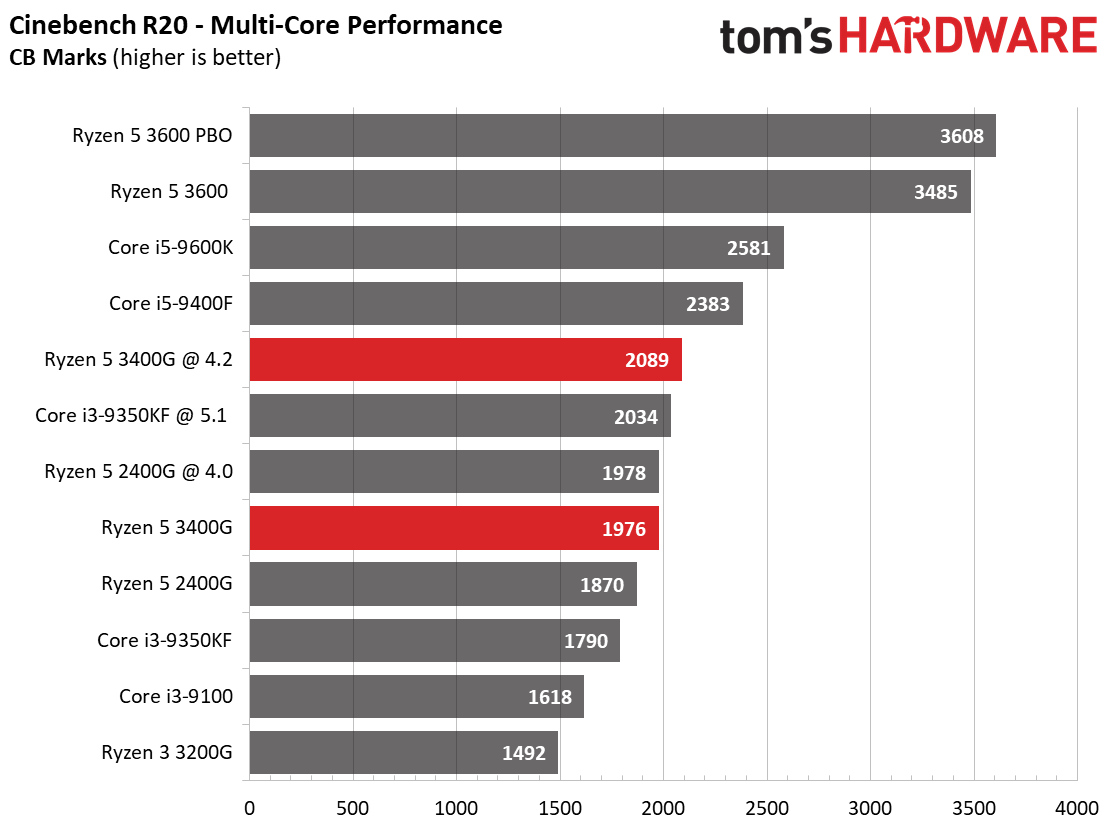

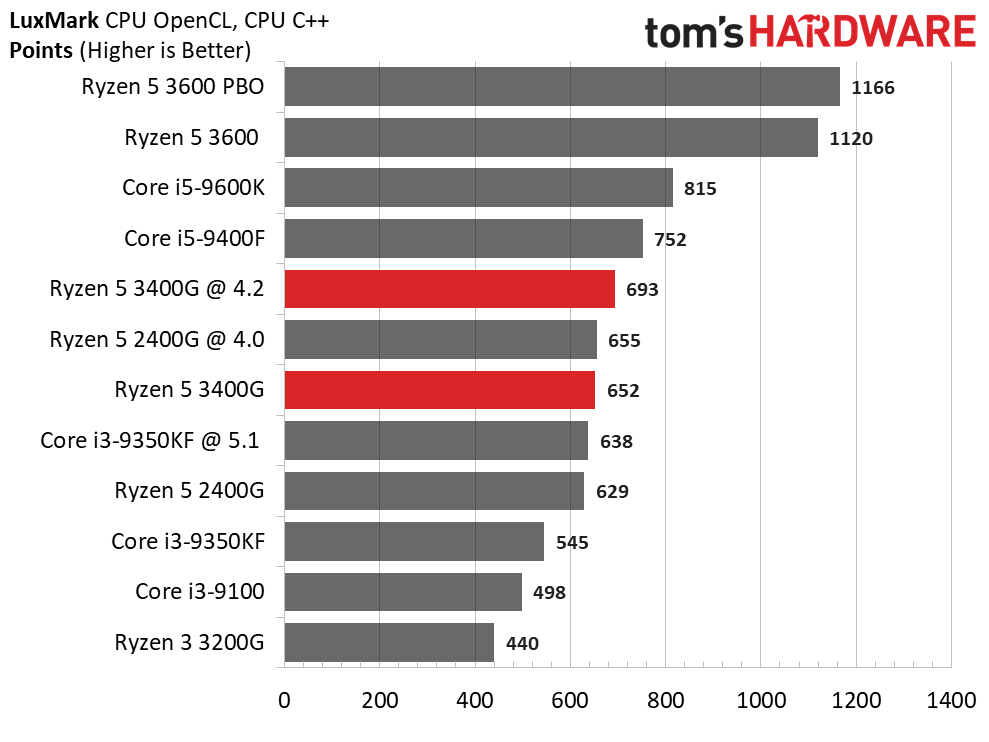
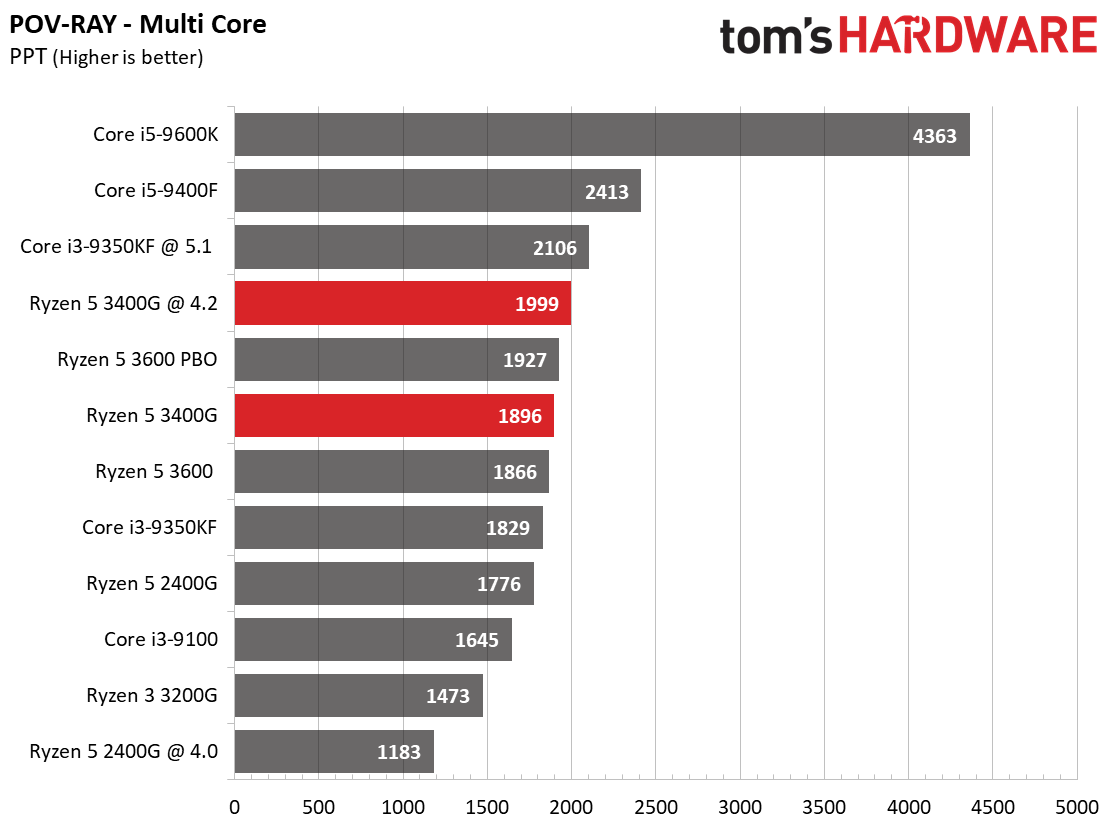
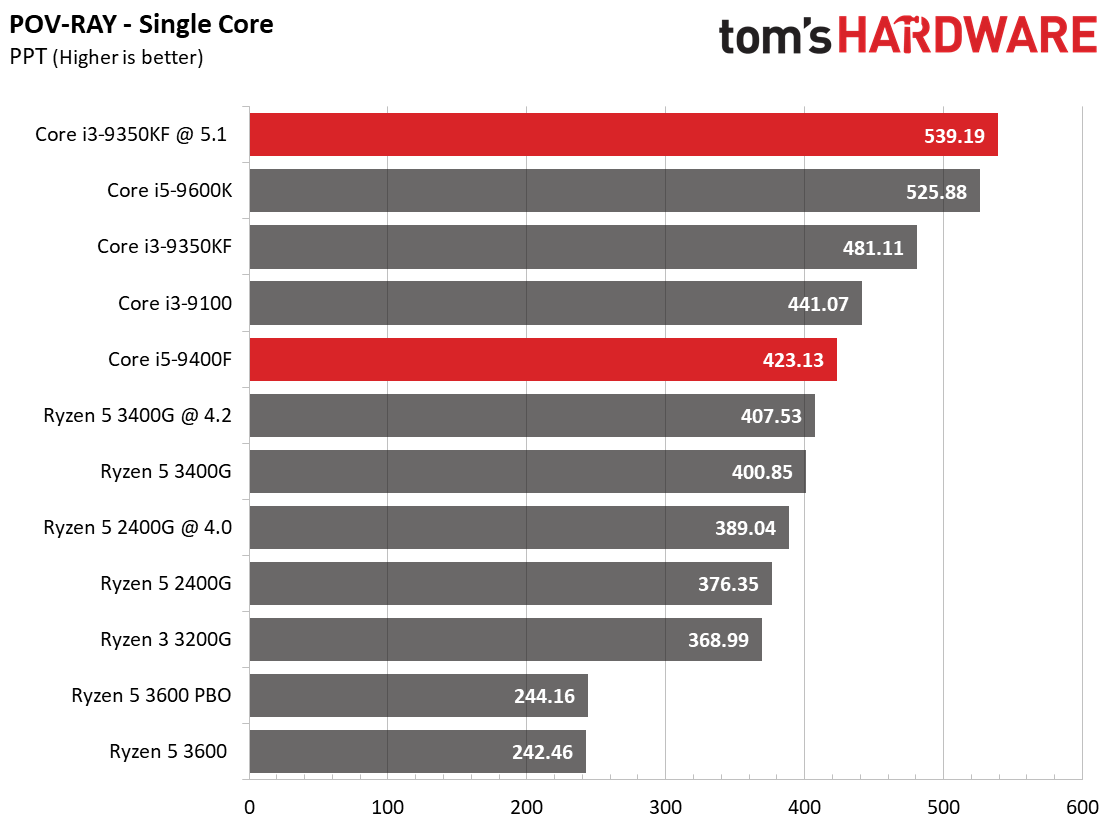

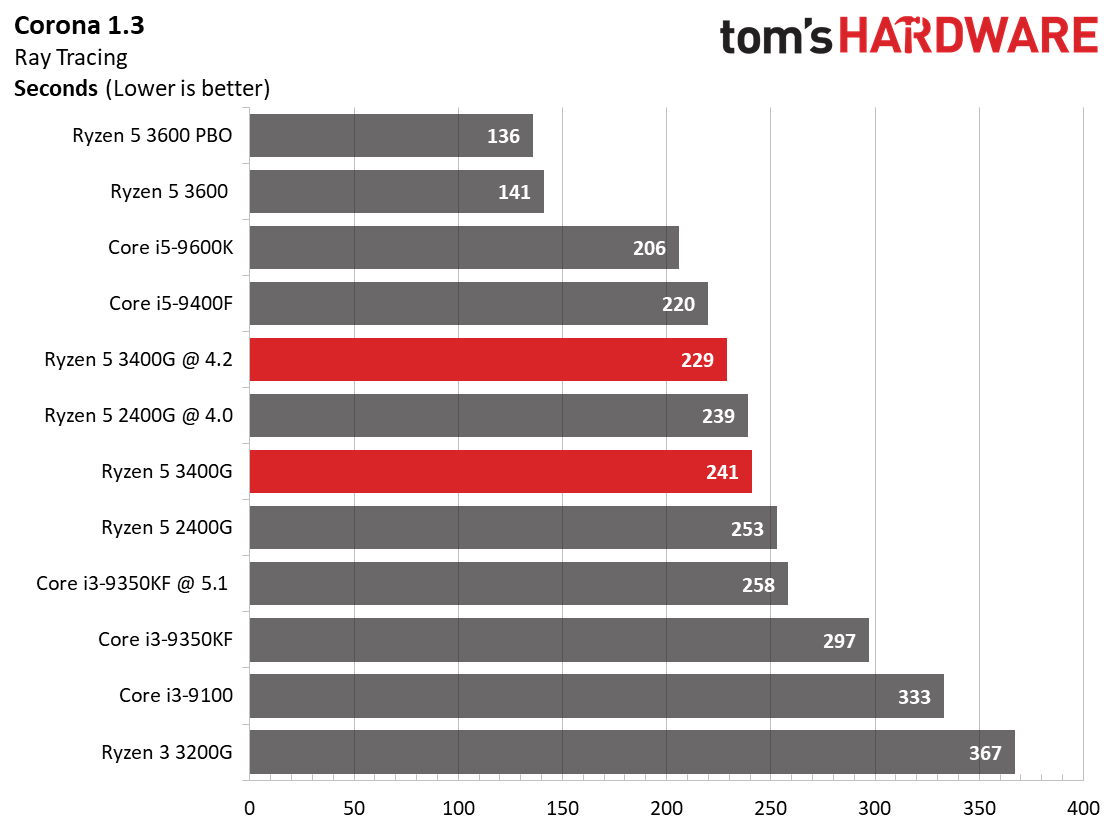
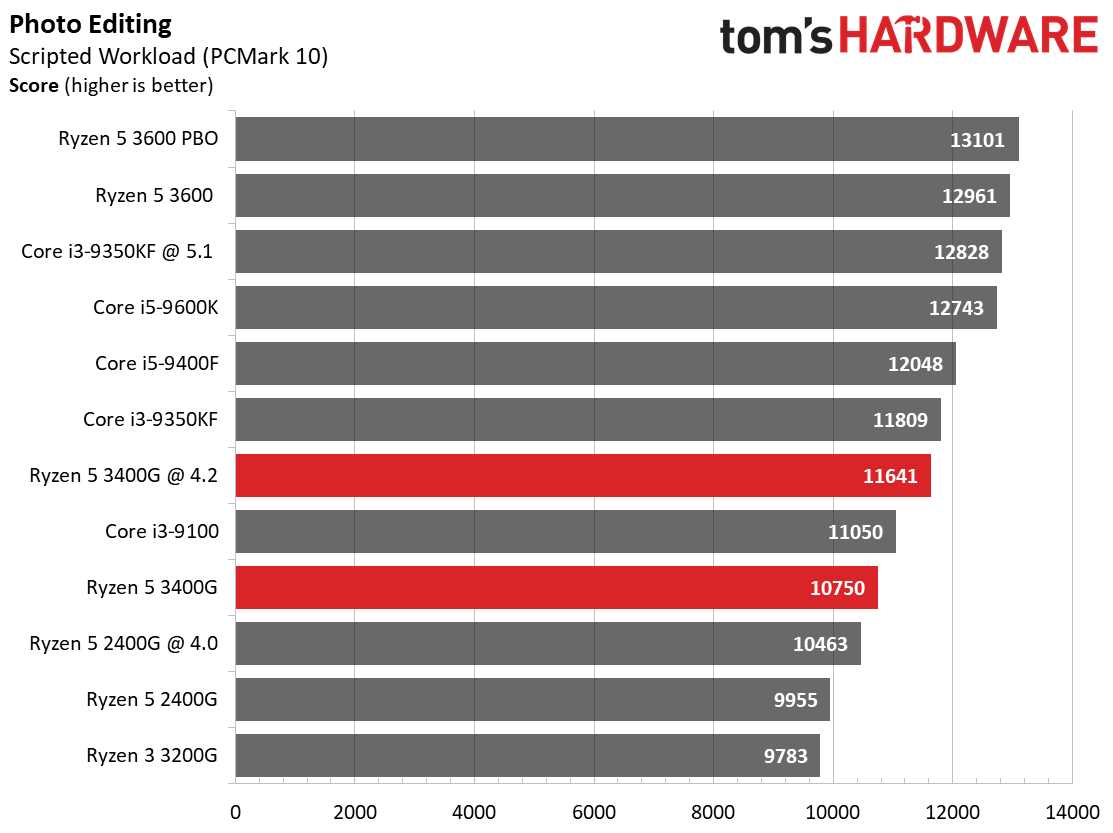

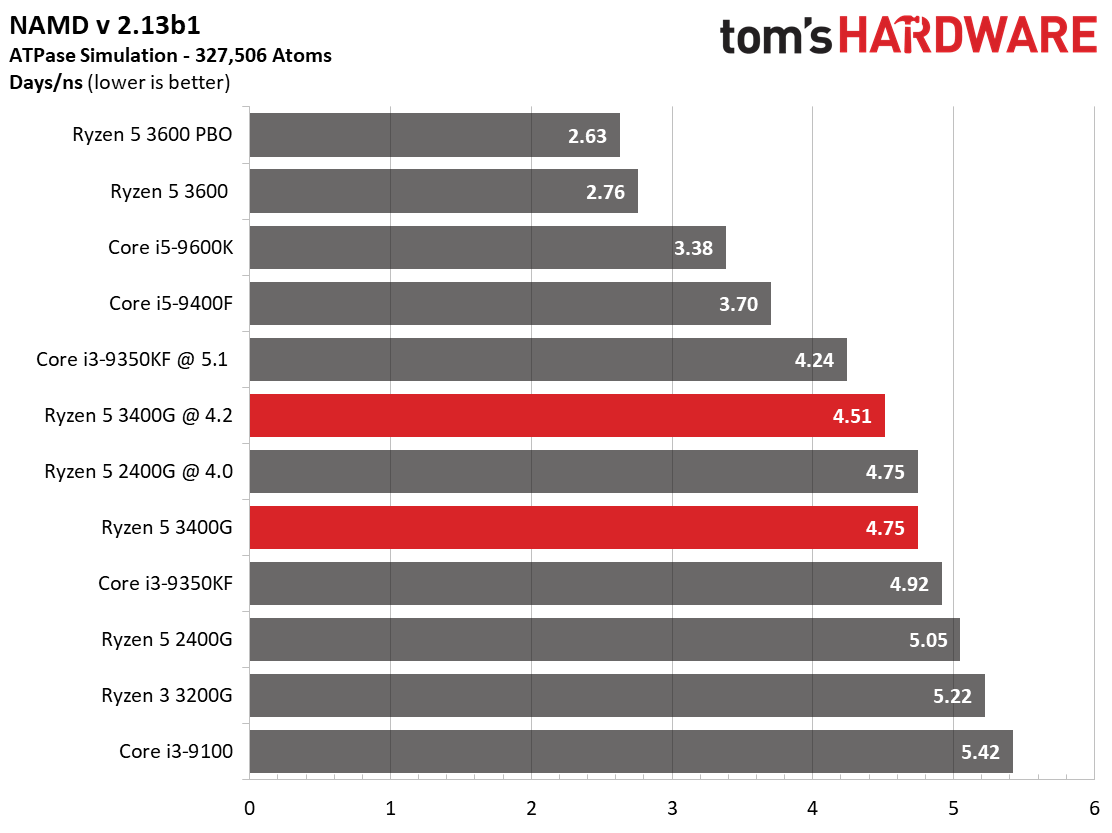
We don't really expect users in this price class to lean on heavily-threaded rendering applications much, but performance here is important for some mundane tasks, like photo editing.
Here we can see the higher-end Ryzen 5 3600 deliver an overwhelming performance advantage due to its six cores and twelve threads, but down in the lower end of the test pool, the Ryzen 5 3400G competes well given its low price point and comparatively light allocation of four cores and eight threads. To find a faster processor for rendering in this price band, you'll have to dish out $23 more for a Core i5-9350KF. However, if you select that chip and plan to do any type of meaningful gaming, you'll have to add in the price of a discrete GPU.
Encoding

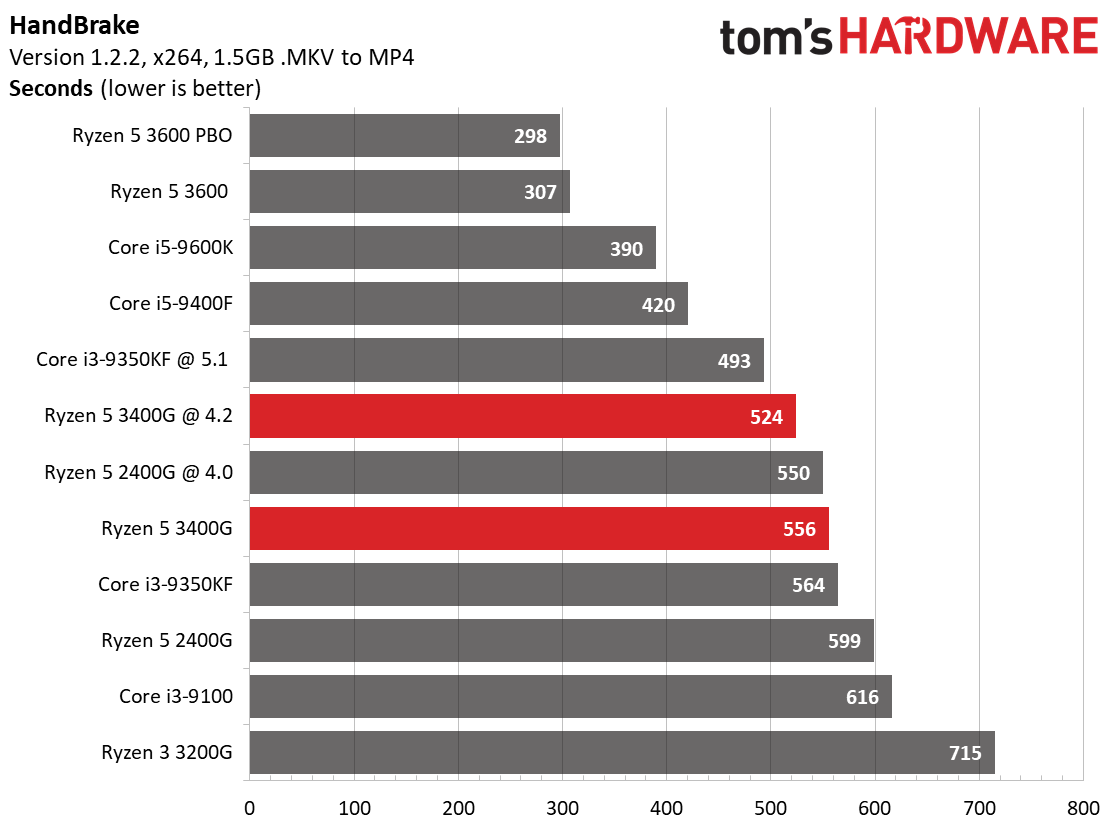
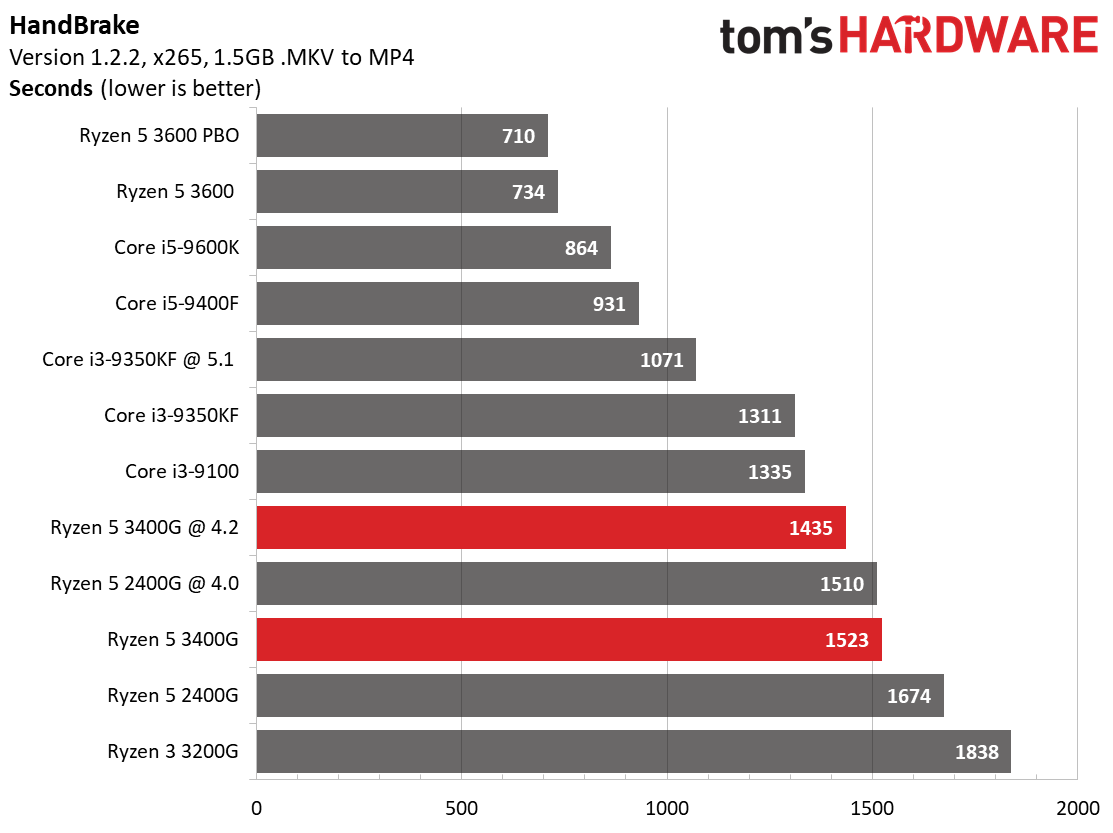
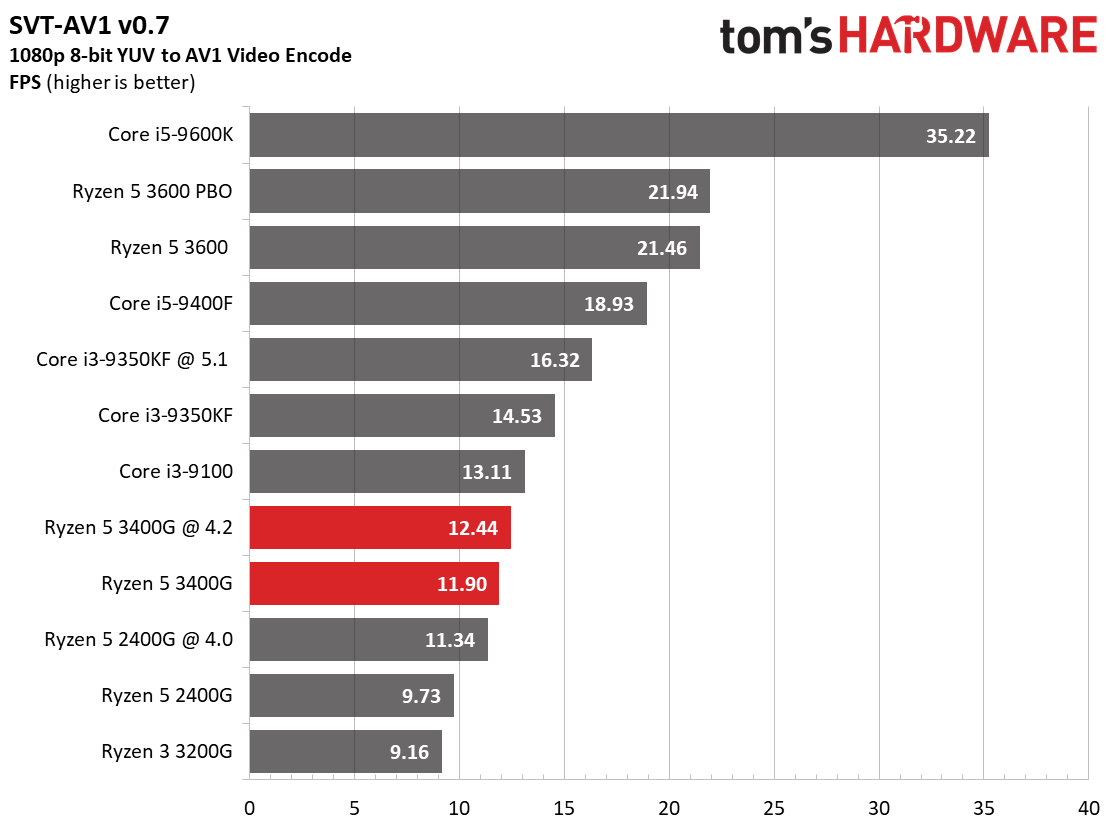
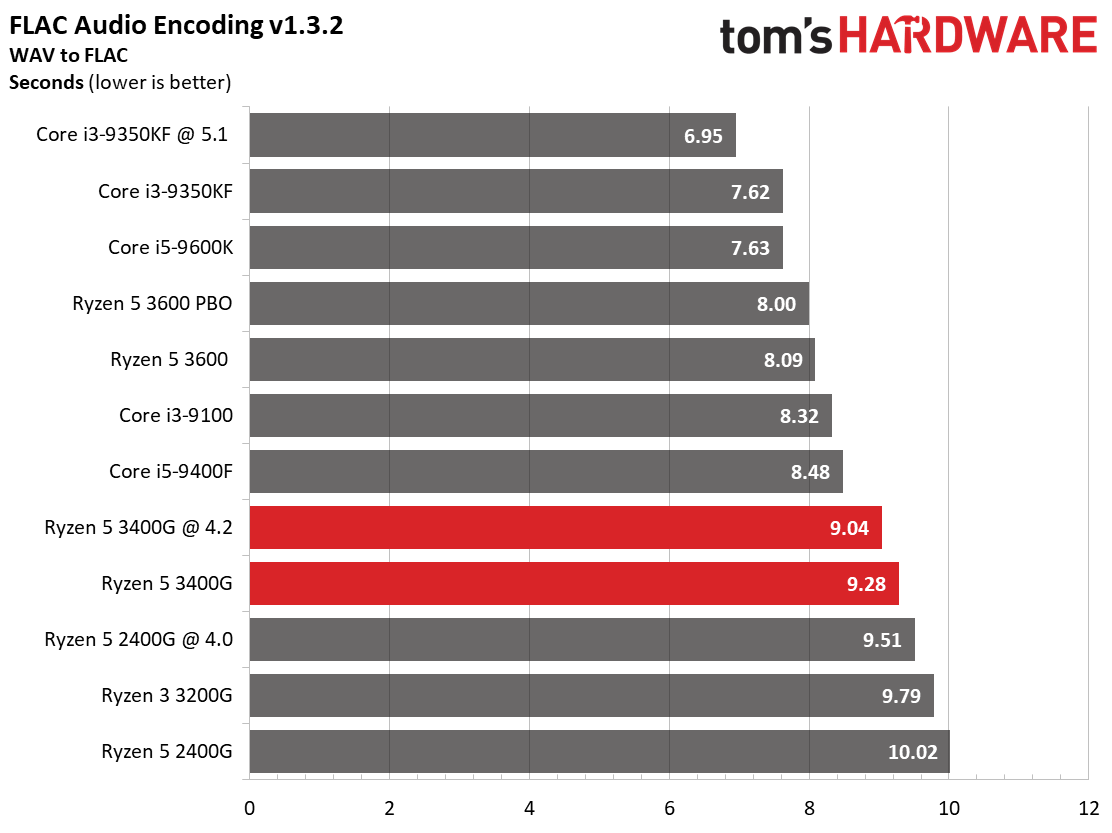
The Ryzen 5 3400G benefits from overclocking in the single-threaded LAME encoder, but the Core i3-9100 and i5-9400F carve out a slim lead at stock settings. The -9350KF is even more impressive with its single-core 4.6 GHz boost, but its pricing isn't acceptable for this price segment.
The Intel/Netflix-designed SVT-AV1 represents a new breed of encoders that leverage multi-core architectures well, but the Ryzen 5 3400G doesn't fare as well in this test. We see the same trend in the HandBrake tests, and the reason is simple: AMD's first-gen Zen architecture isn't quite as adept at AVX workloads as its predecessor, handing Intel the per-core lead in applications that leverage vectorized code.
Web Browser
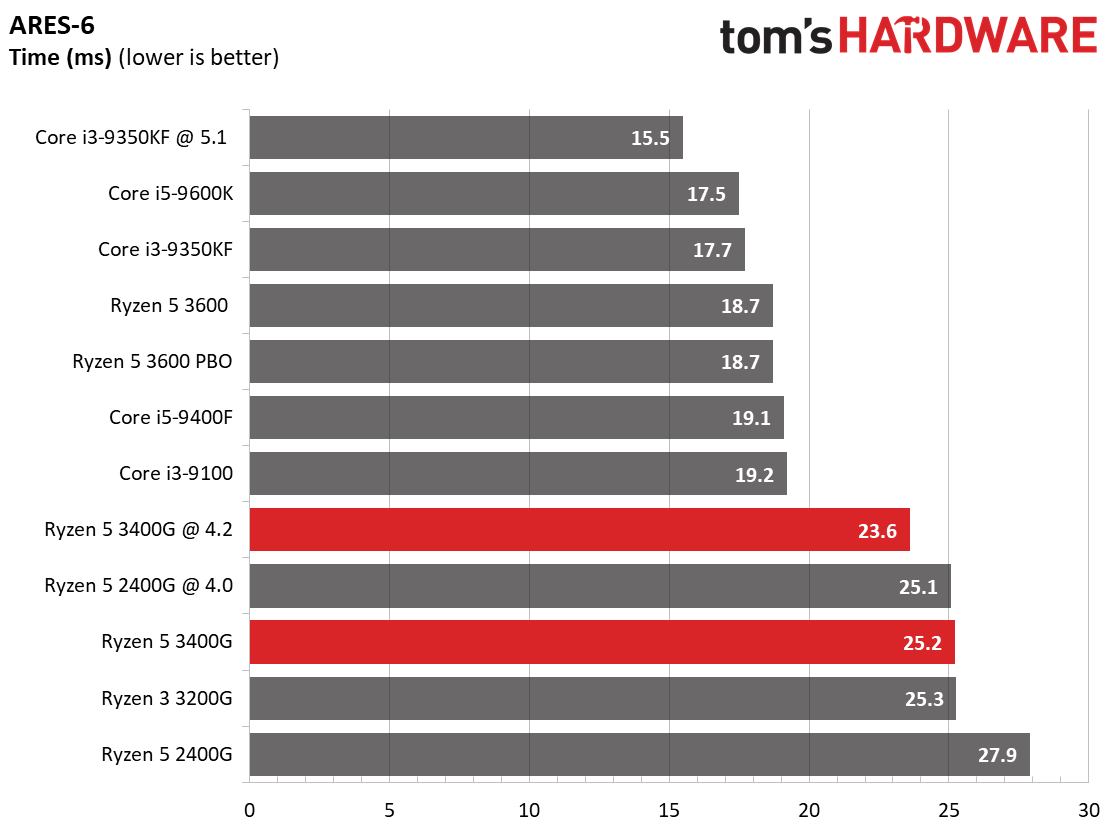

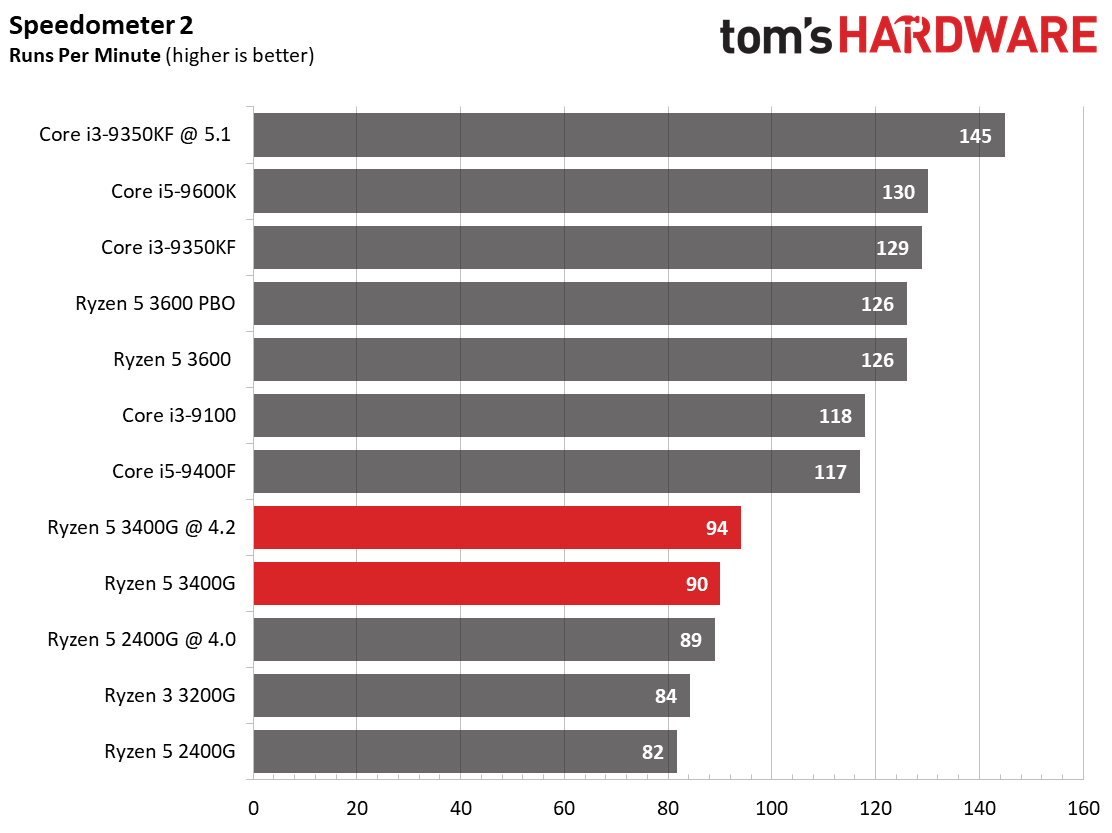
Browsers aren't often perceived as an important or particularly demanding workload, but the snappiness of your everyday web browsing experience is heavily impacted by a combination of instruction per cycle (IPC) throughput and frequency. Web browsers generally tend to be impacted more by the recent security mitigations than other types of applications, so Intel has taken a haircut in these benchmarks of fully-patched systems.
That handicap doesn't stop Intel from sweeping the competition, though, especially when we compare the first-gen Zen architecture to Intel's highly-refined Skylake derivatives. We see the uplift from the Zen 2 architecture clearly here in the 3600's results, but AMD's APUs aren't nearly as responsive due to their position on AMD's trailing-edge architecture and node.
Office and Productivity
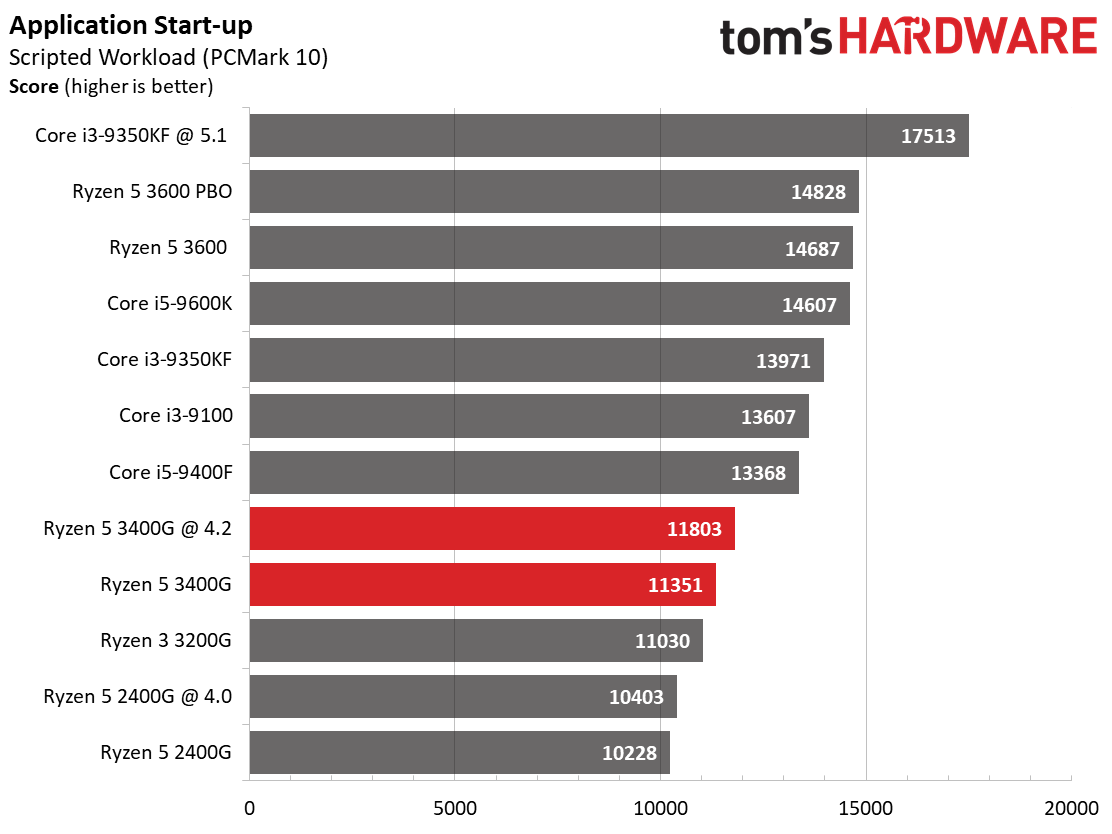
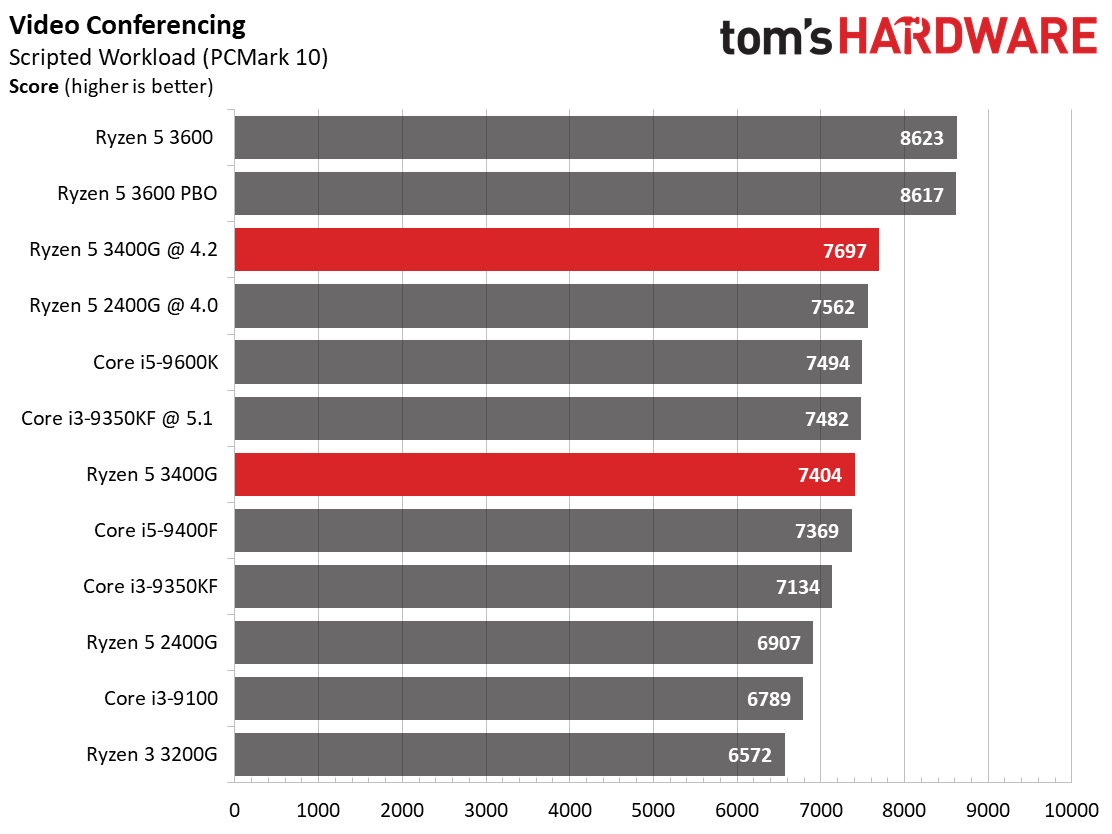


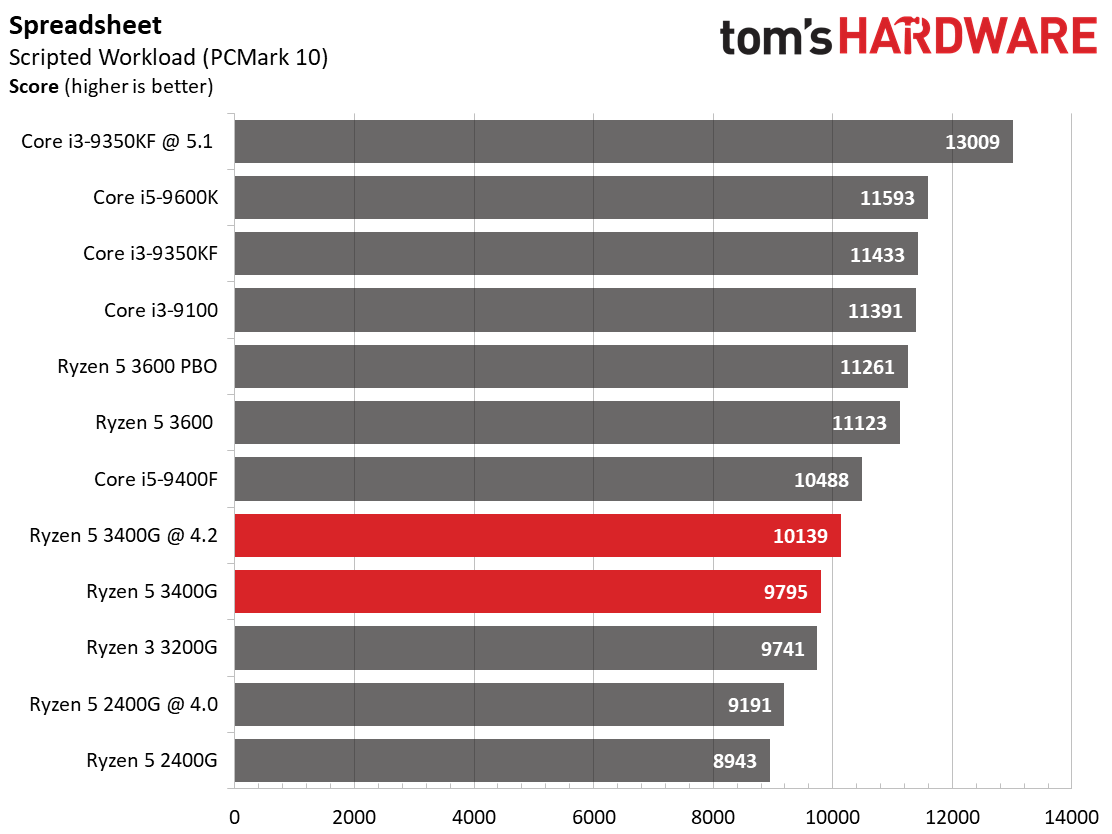
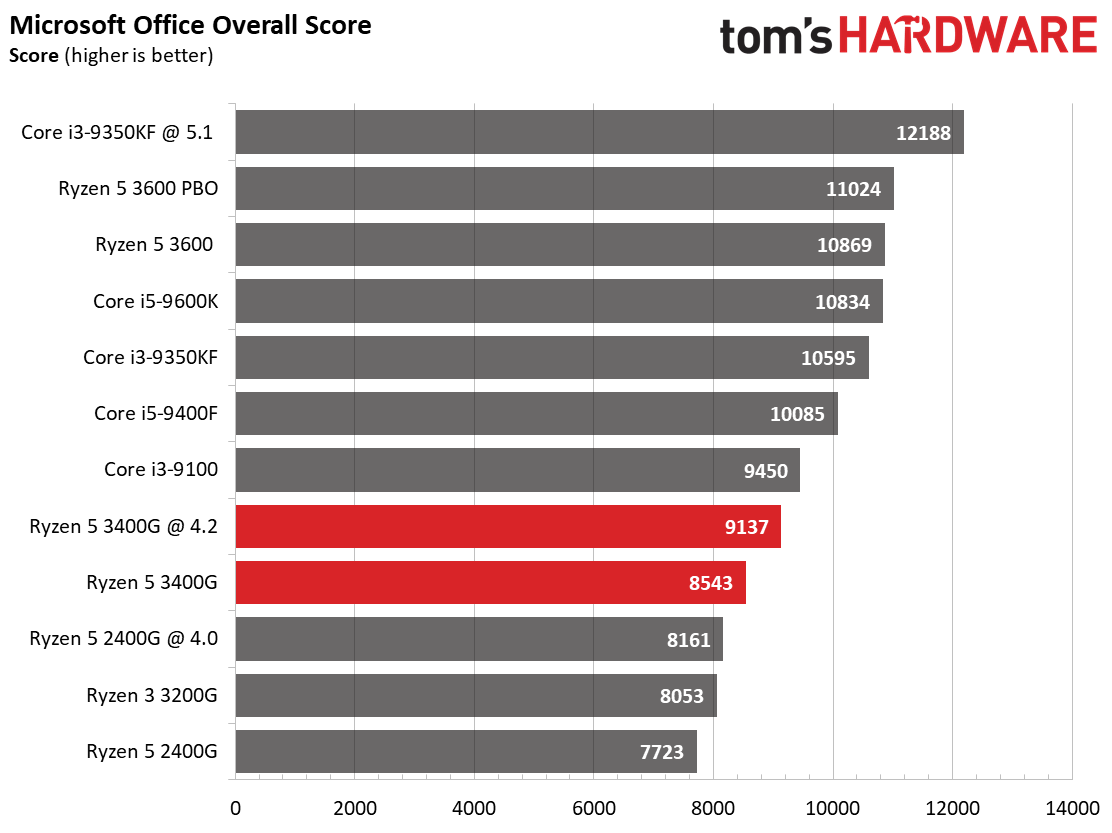
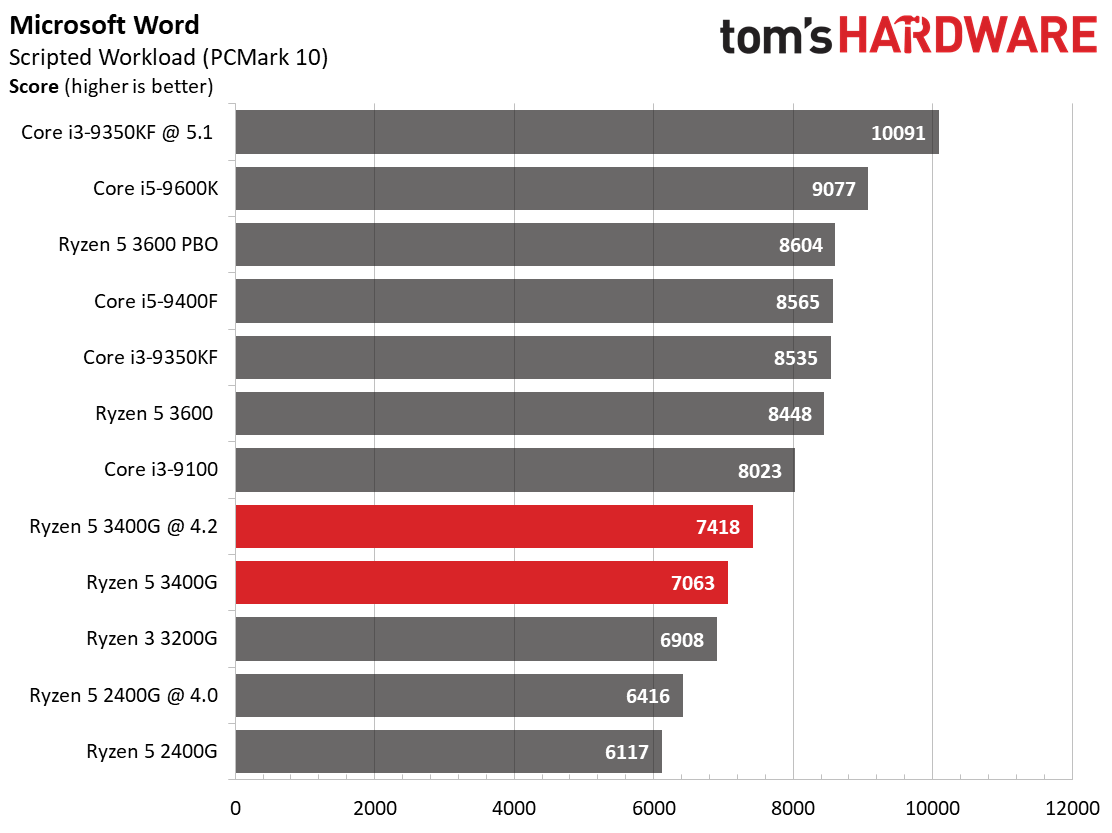
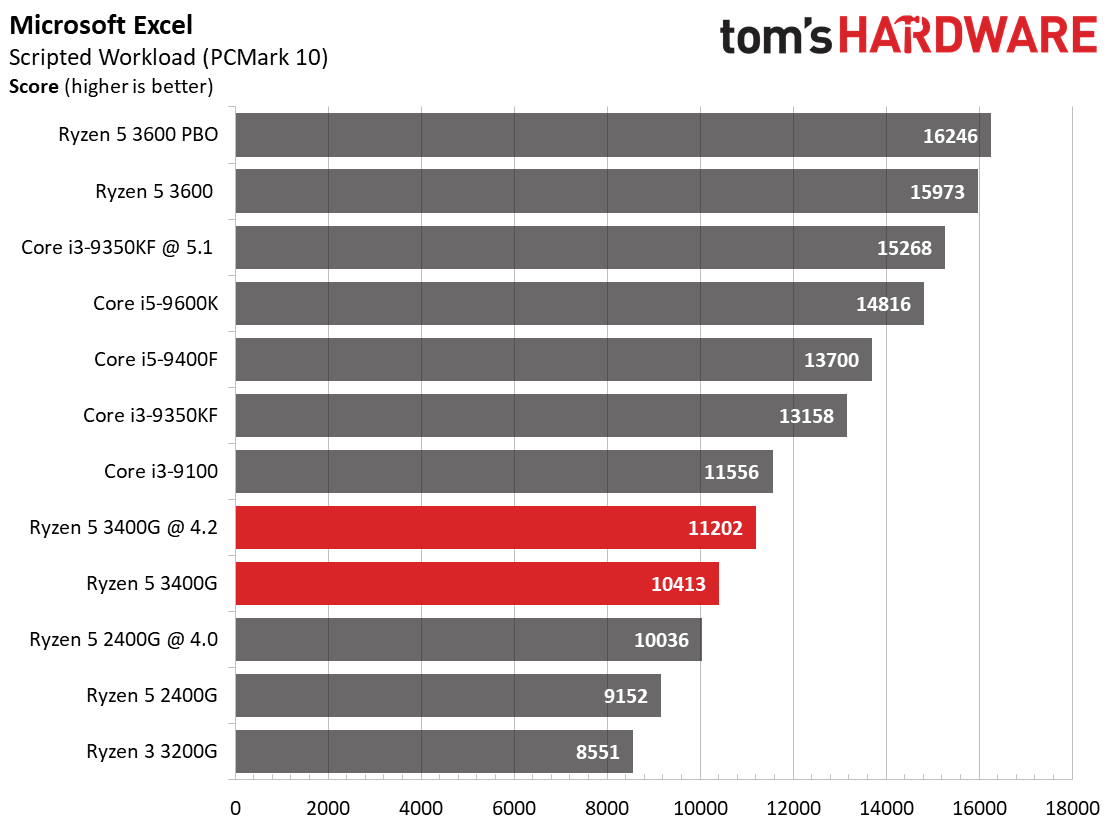
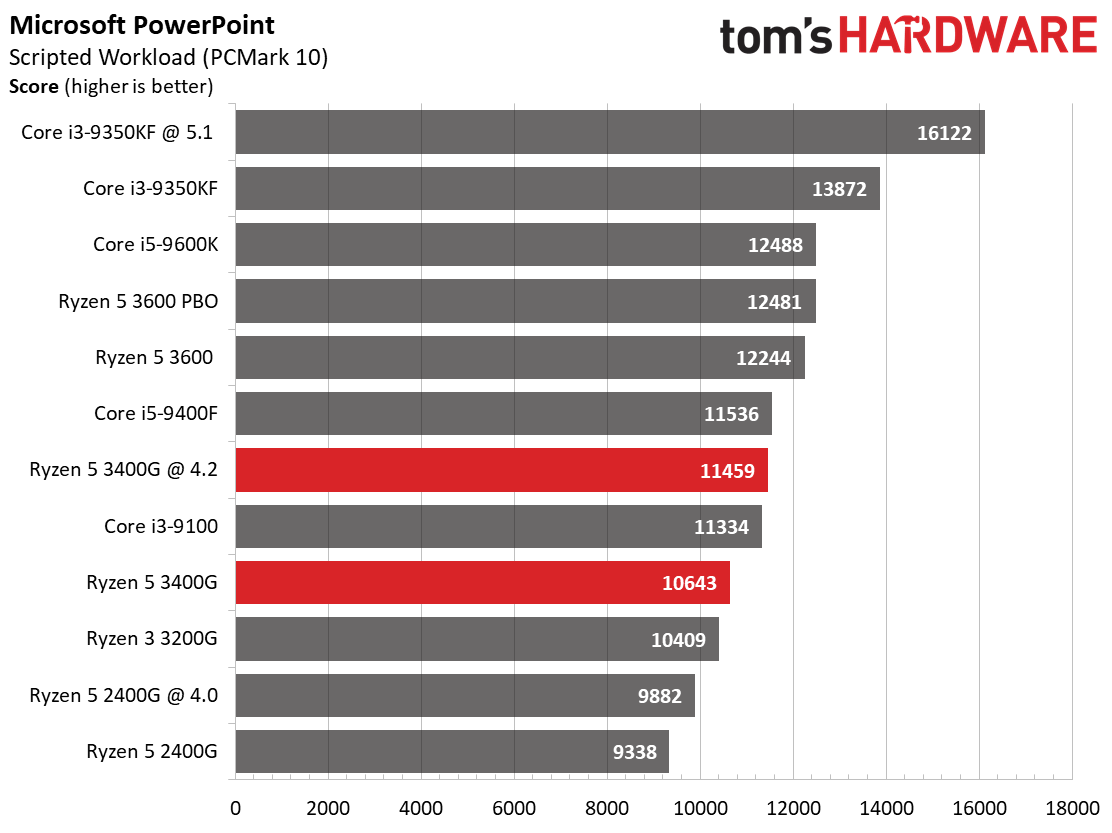
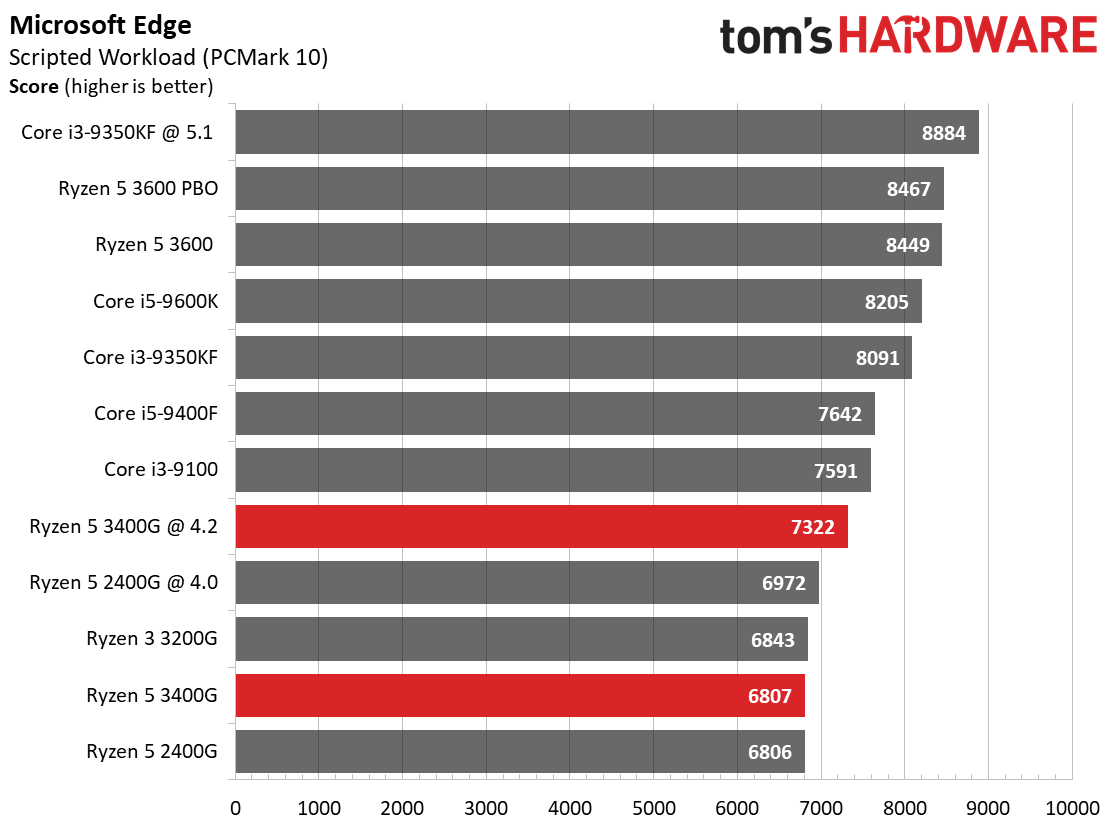
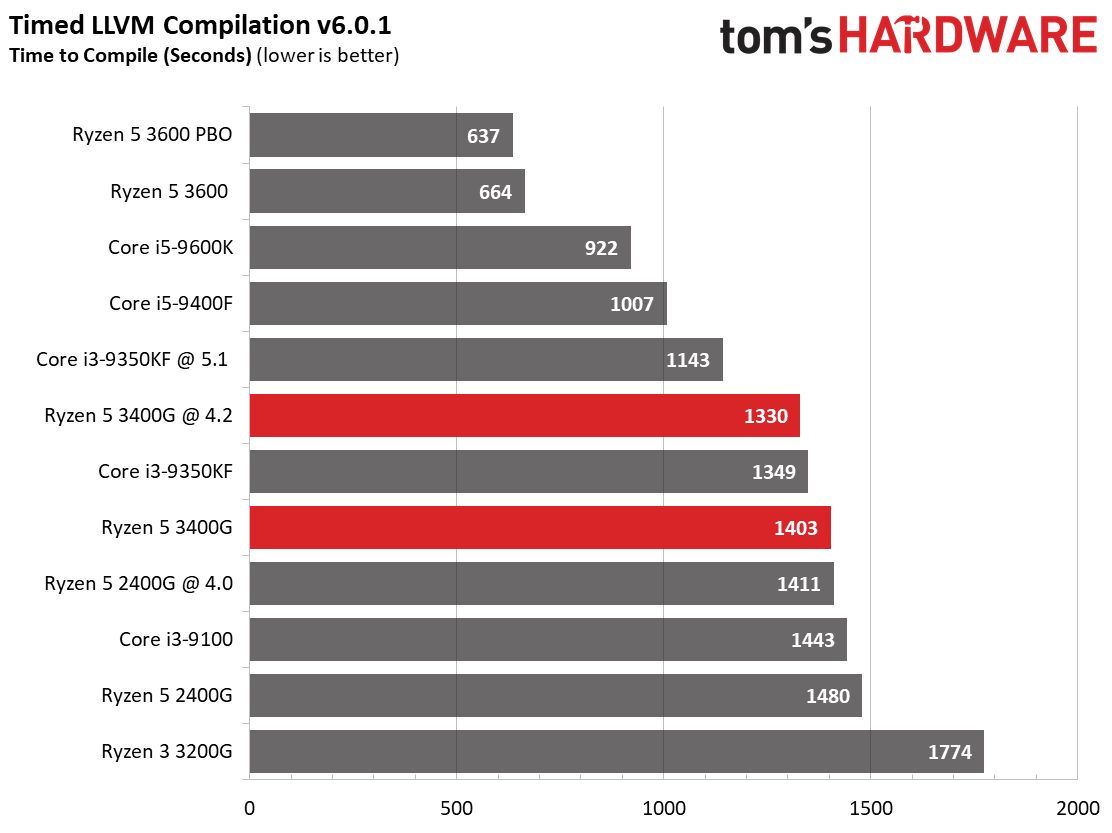
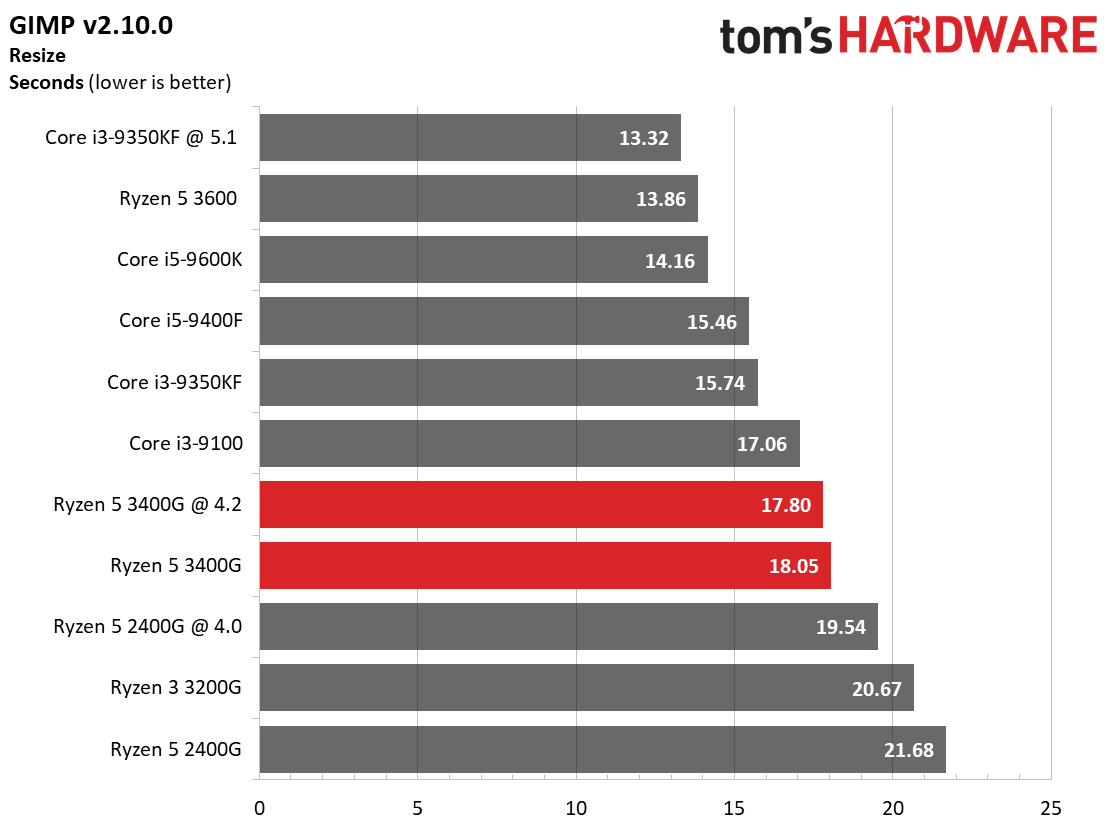
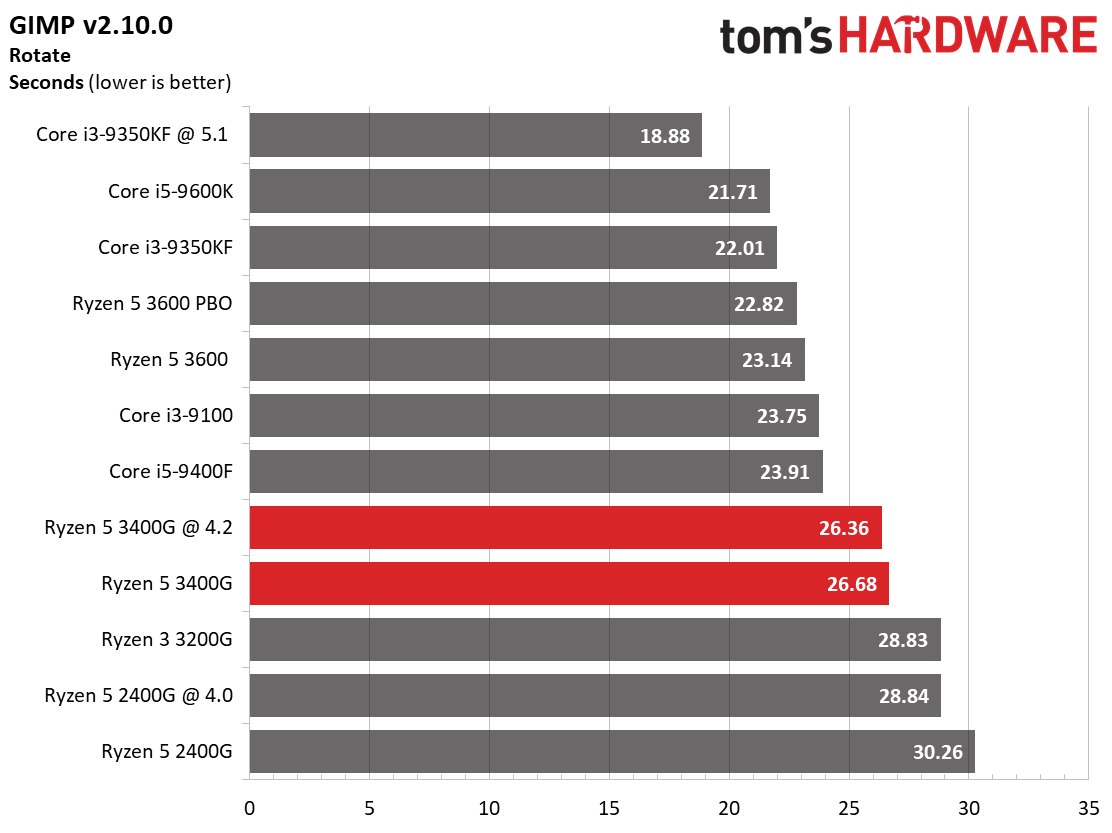
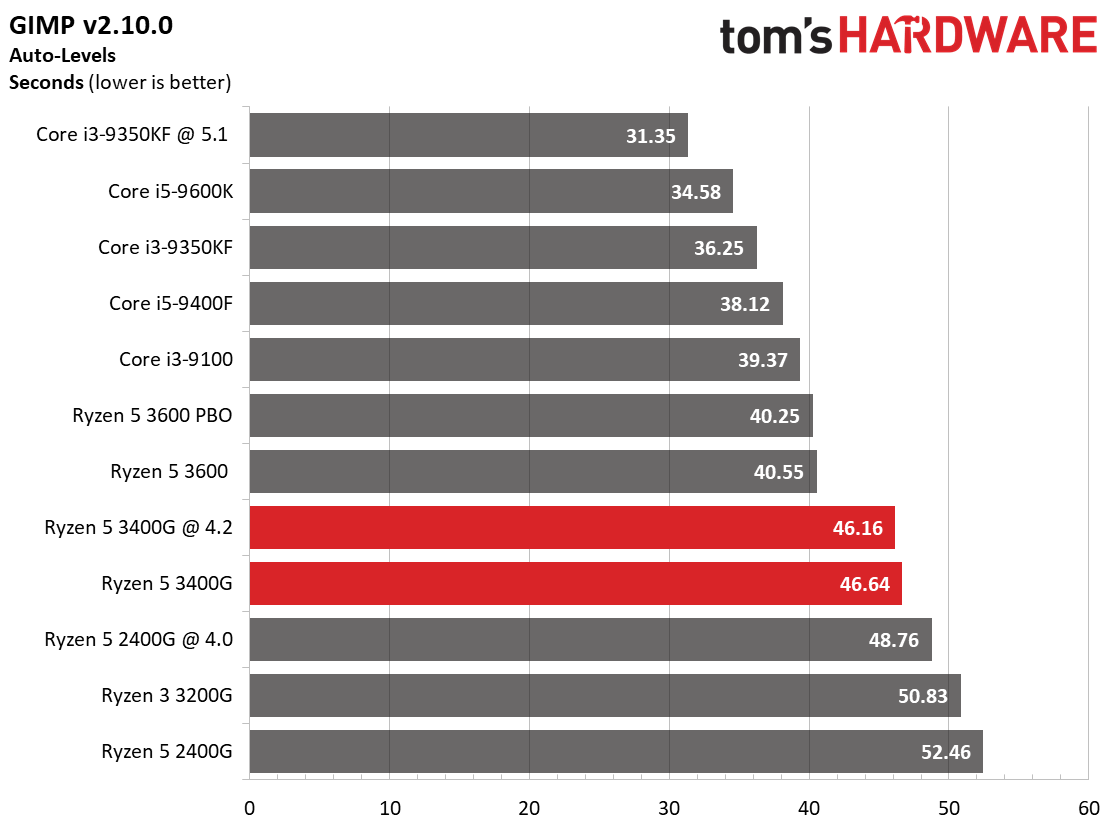
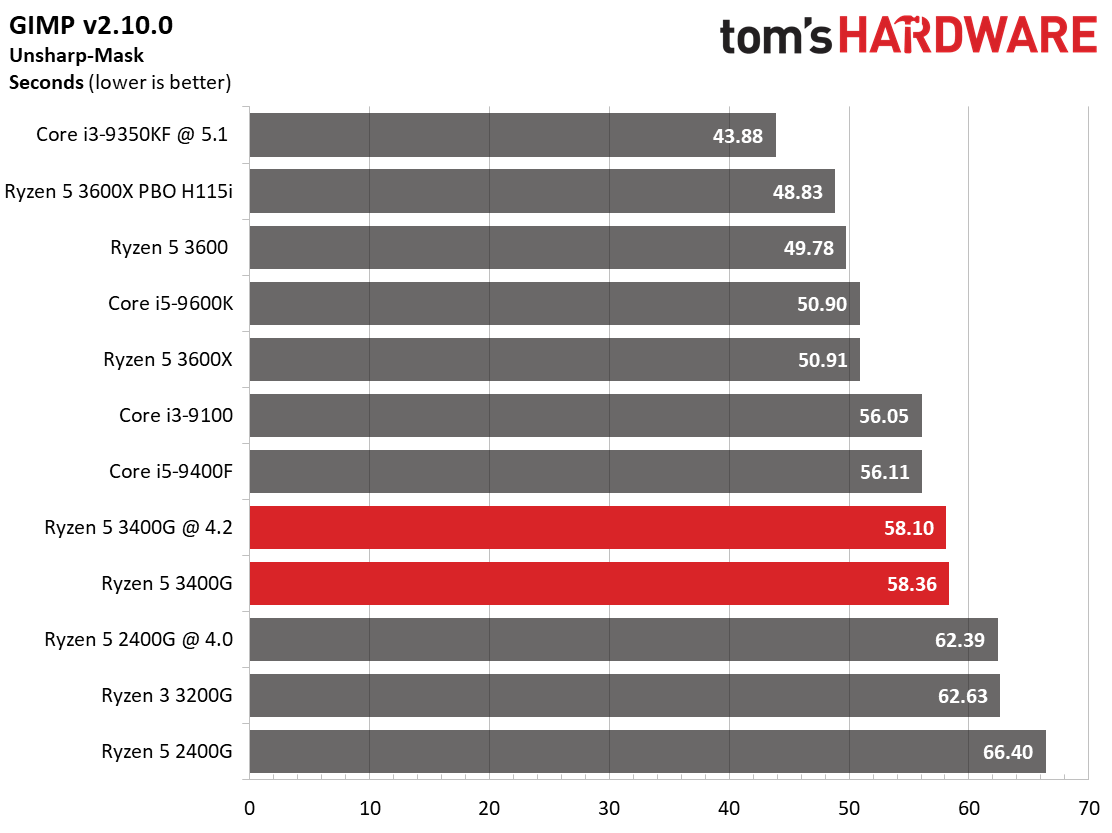
Microsoft's office suite runs via PCMark 10's new application test. This benchmark tests with real Microsoft Office applications. With the exception of the video conferencing workload, the Ryzen 3400G trails the less-expensive Core i3-9100 throughout the Office tests, leading to a lower overall score.
Get Tom's Hardware's best news and in-depth reviews, straight to your inbox.
The application start-up metric measures load time snappiness in word processors, GIMP, and Web browsers. Other platform-level considerations affect this test as well, including the storage subsystem. Intel's i3-9100 takes a big lead in this test, and once again, we see a big gap between second- and third-gen Ryzen.
Overall, the Core i3-9100 is faster in the majority of workloads, and that's even after we overlocked the Ryzen 5 3400G.
Compression, Decompression, Encryption, AVX

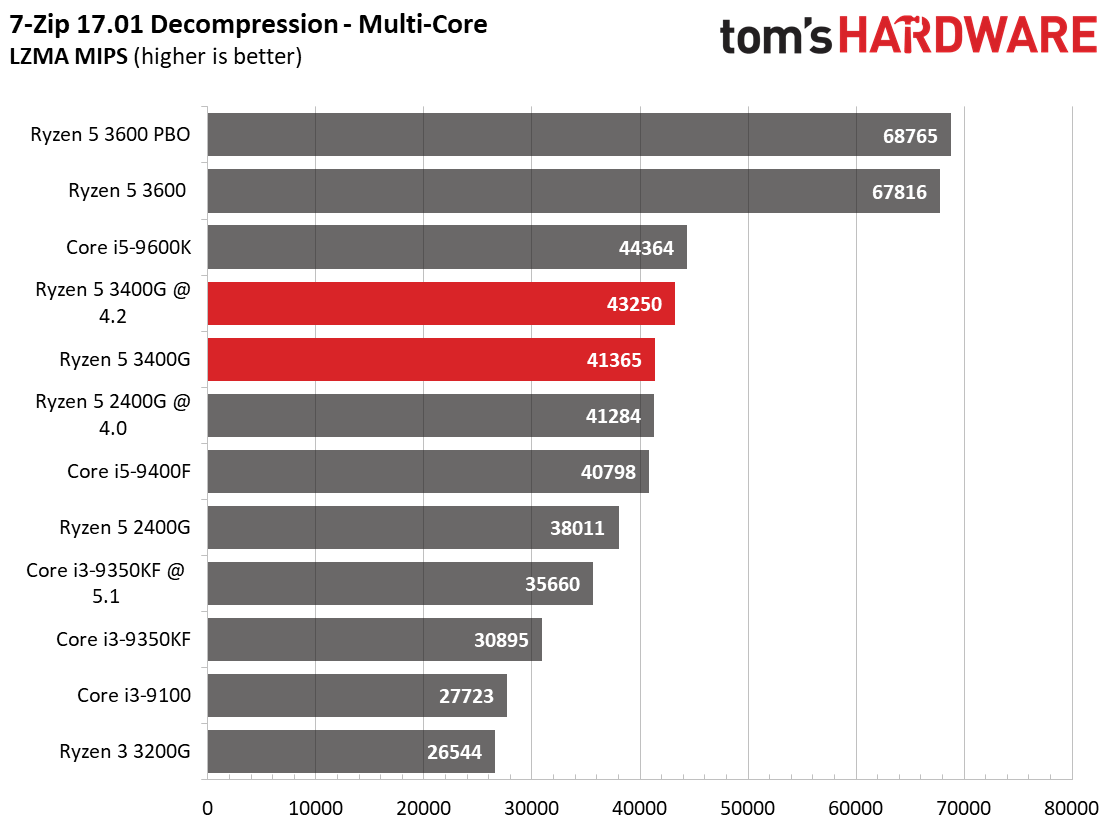
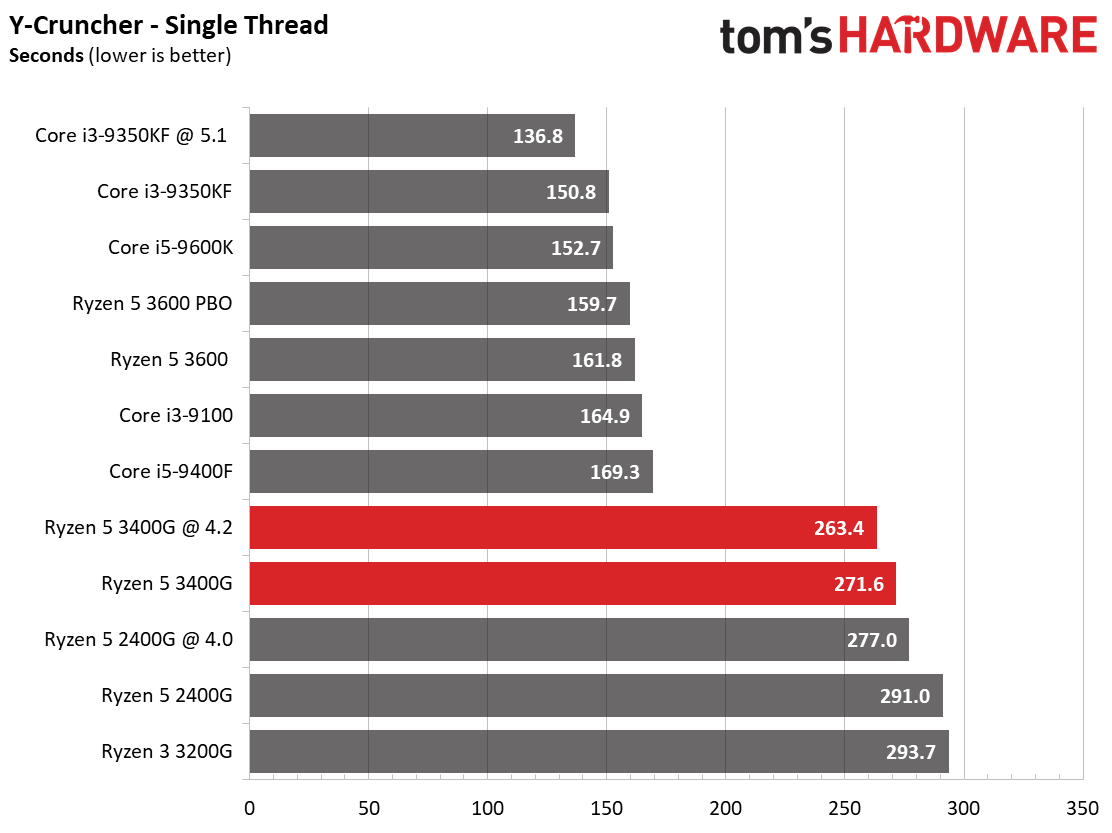
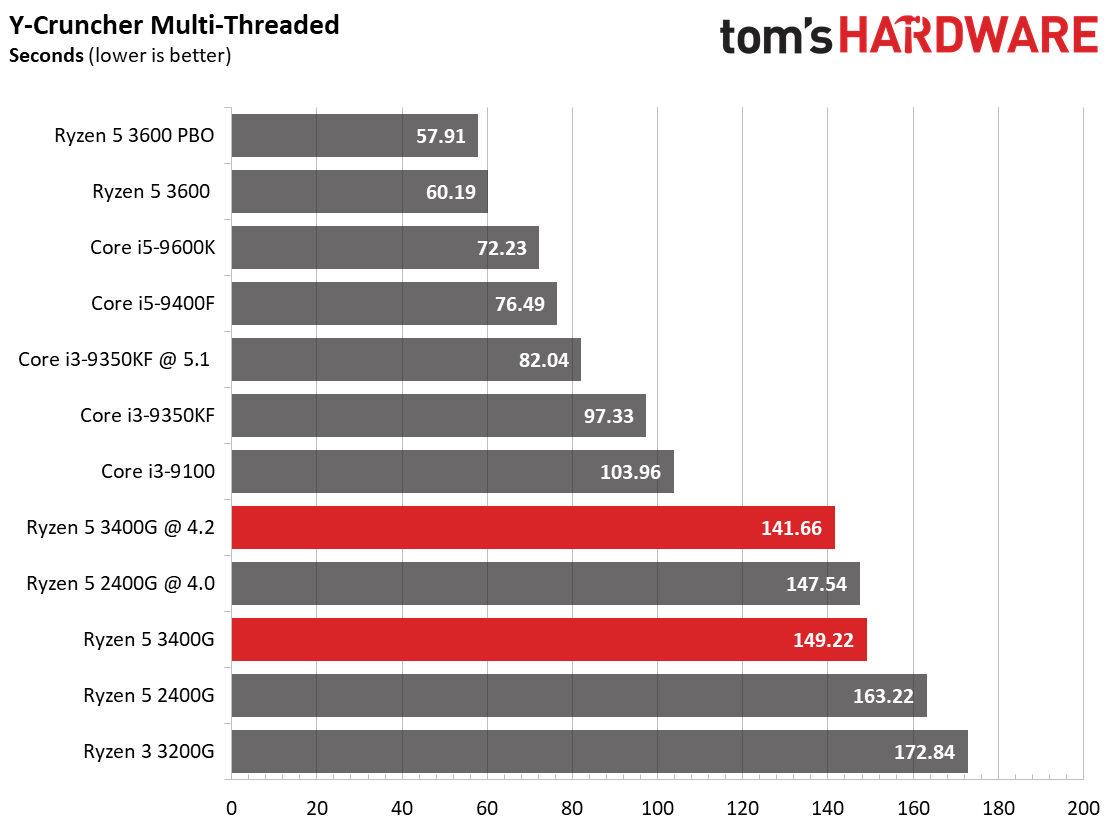
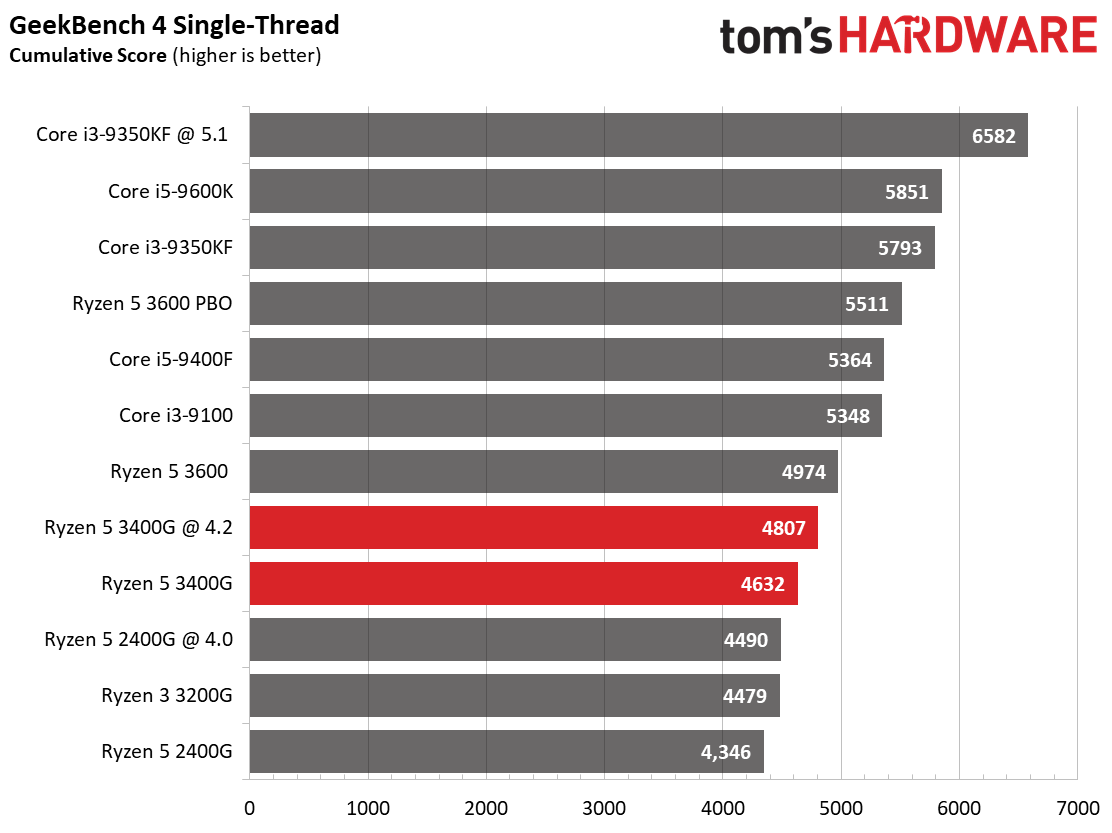
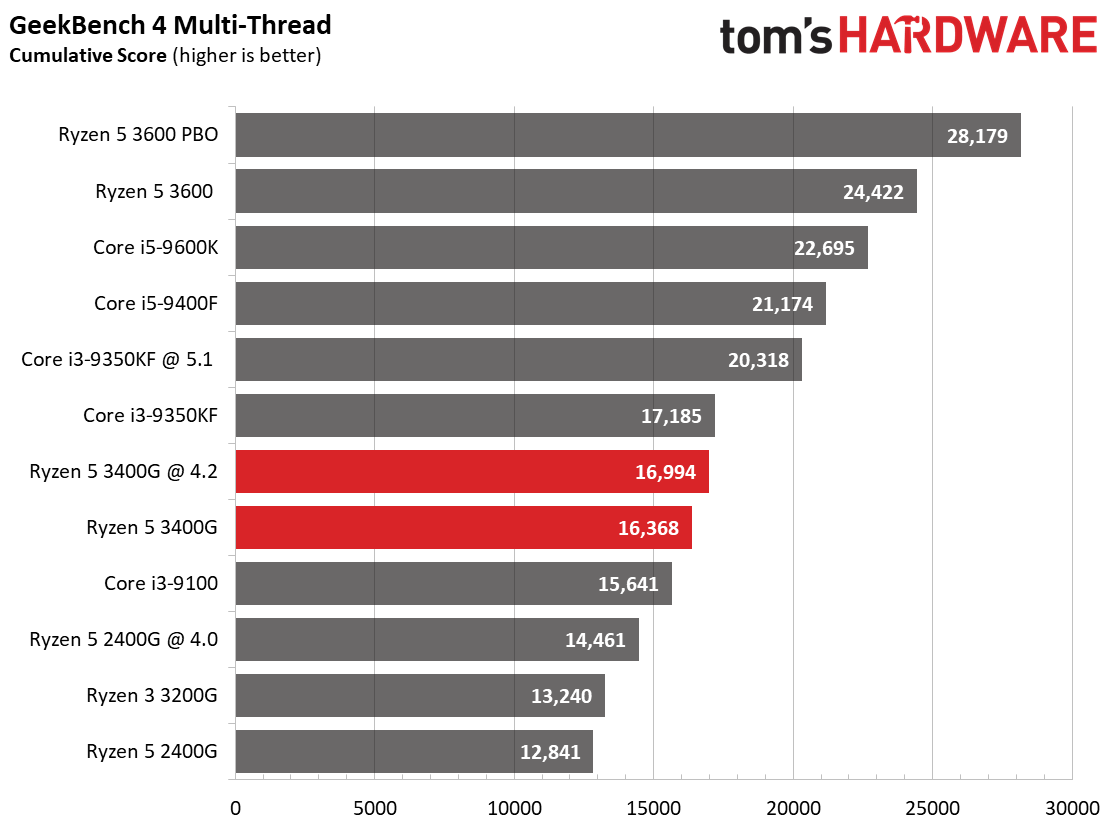
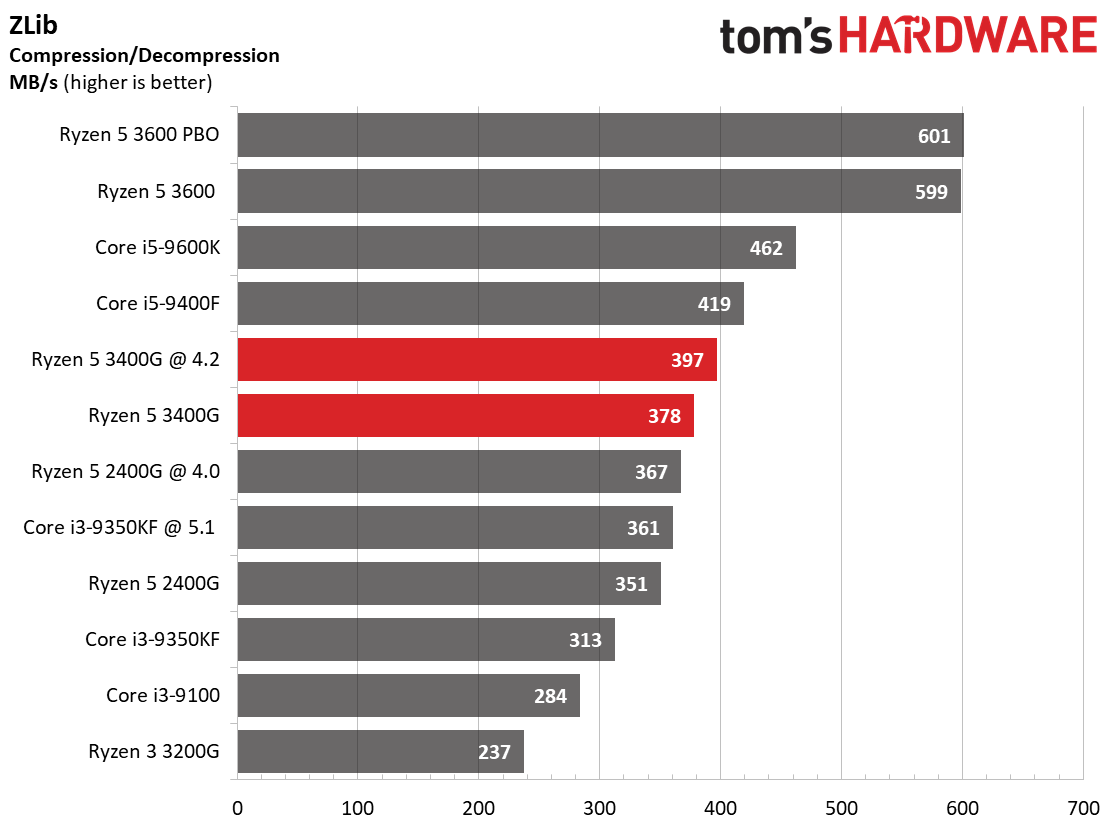

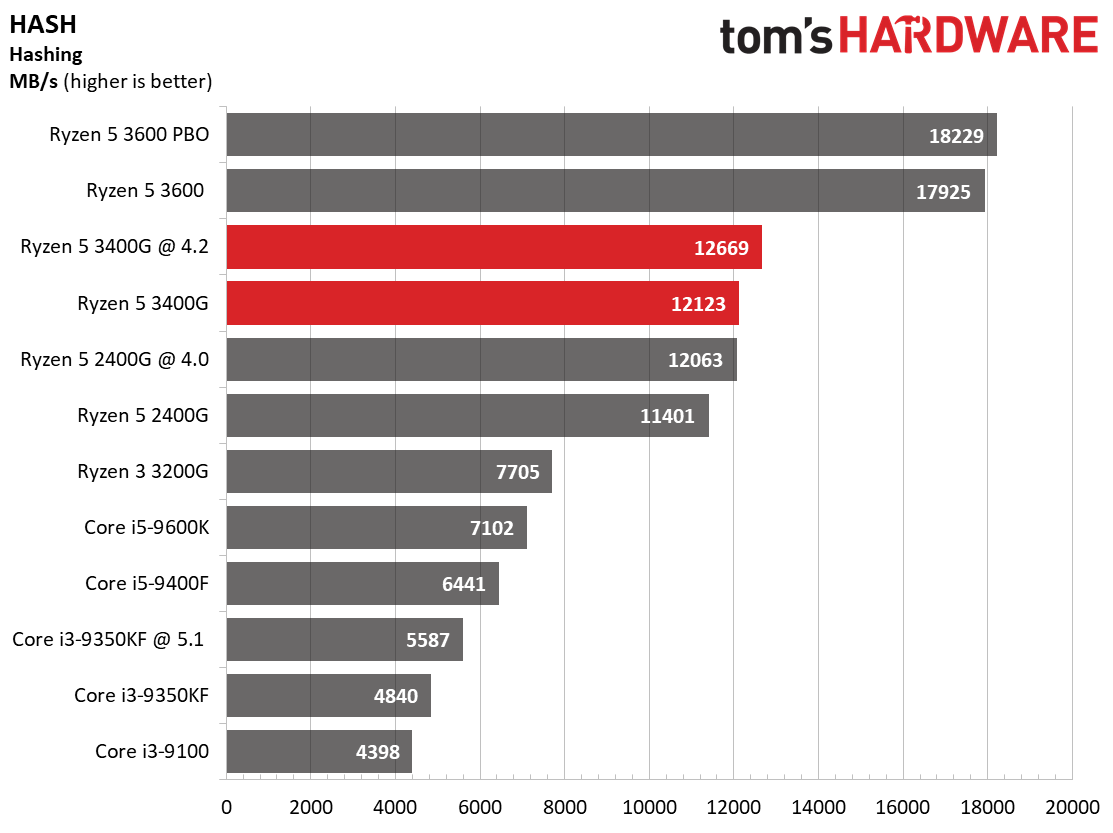
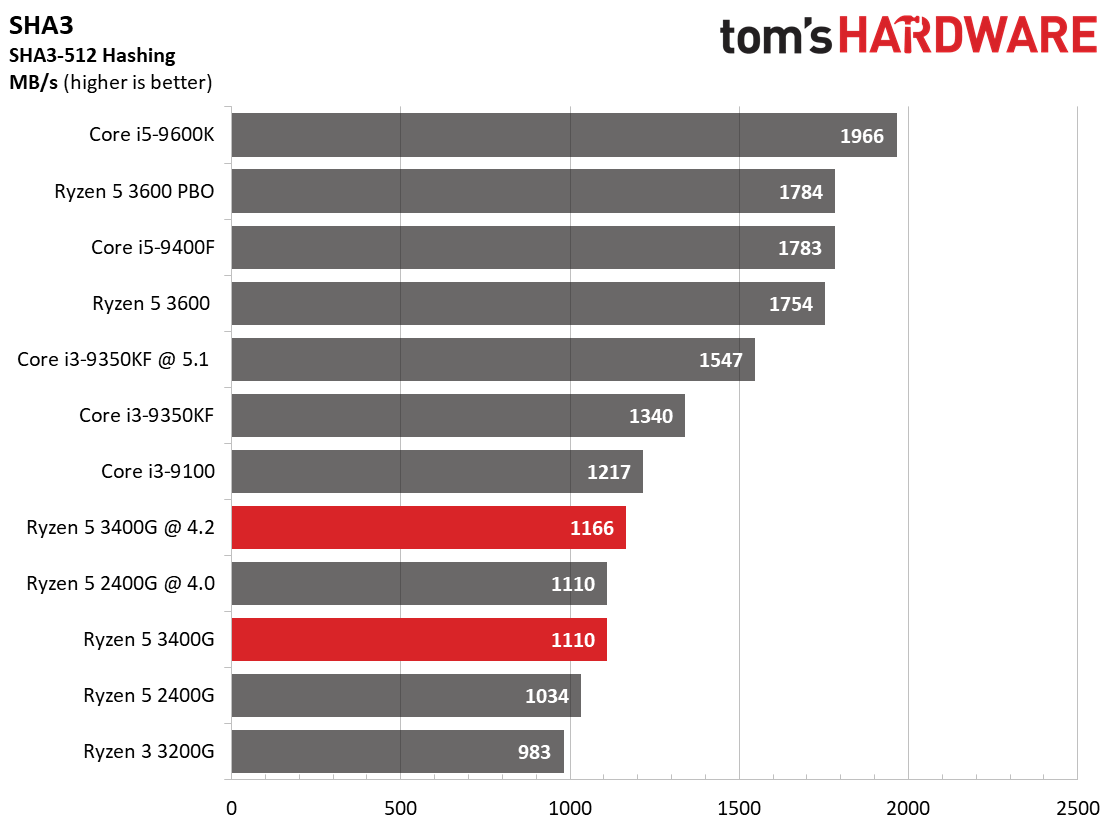
Compressing and decompressing files is a common task, and here the 3400G's thread count provides an advantage over the Core i3-9100 in both the 7zip and Zlib benchmarks. These benchmarks rely heavily upon threading and work directly from system memory, thus avoiding the traditional storage bottleneck in these types of tasks. The core i5-9400F proves to be a more nimble opponent that snatches the lead in both Zlib and the 7zip compression tests.
The heavily-threaded y-cruncher benchmark, which computes pi using the taxing AVX instruction set, finds the 3400G trailing by a significant margin in both the single- and multi-threaded tests. You'll need to step up to a third-gen Ryzen processor to beat Intel's performance in AVX-heavy workloads.
MORE: Best CPUs
MORE: CPU Benchmark Hierarchy
MORE: All CPUs Content
Current page: Ryzen 5 3400G Application Performance
Prev Page Ryzen 5 3400G Gaming Next Page Picasso Paints an Iterative Update Picture
Paul Alcorn is the Editor-in-Chief for Tom's Hardware US. He also writes news and reviews on CPUs, storage, and enterprise hardware.
-
yeti_yeti i3-9350K on top in pretty much all of the gaming tests with a discrete gpu? From what I have seen, it is considered a terrible purchase at its MSRP. Didn't expect to see it perform this well in this review.Reply -
alextheblue Reply
Yeah these are only a decent buy if you're looking for something with a strong iGPU. Even then, these are stopgaps until the Zen 2 powered APUs hit - although that might be a while, since they're wisely targeting mobile first. They've also been around for a while now, so it's not like a hot new release.yeti_yeti said:i3-9350K on top in pretty much all of the gaming tests with a discrete gpu? From what I have seen, it is considered a terrible purchase at its MSRP. Didn't expect to see it perform this well in this review. -
Darkbreeze Replyalextheblue said:Yeah these are only a decent buy if you're looking for something with a strong iGPU. Even then, these are stopgaps until the Zen 2 powered APUs hit - although that might be a while, since they're wisely targeting mobile first. They've also been around for a while now, so it's not like a hot new release.
Which is exactly what makes it surprising that we're seeing a review of it at this late date. But I guess ANY review of actual hardware is a good thing. Better than another "this is on sale" or "check out these deals" piece of clutter. -
domih I happen to have i5 9600K, R5 3400g, R3 3200g as generic Linux servers.Reply
Using InfiniBand FDR (56Gbps) translating into theoretical max ~48Gbe for IPoIB (Internet over InfiniBand) I get the following the iperf3 results:
44.5 Gbits/sec for the i5 9600K ($243 on NewEgg) on ASRock Z390M-ITX-ac, 32GB mem @ 3200.
46.1 Gbits/sec for the R3 3200g ($95 on NewEgg) on ASRock B450M Pro4, 32GB mem @ 3200.
46.5 Gbits/sec for the R5 3400g ($150 on NewEgg) on ASRock B450M Pro4, 32GB mem @ 3200.
Kind of statistically similar with a 4% advantage to the R5 3400g over the i5 9600K.
So while the i5 9600K has 6C/6T, the R5 3400g with 4C/8T can rival the i5 9600K in specific tasks.
Network cards: Mellanox ConnectX-3 VPI MCX354A-FCBT (about $50 on eBay)
Switch: Mellanox InfiniBand SX6790 (about $200 on eBay)
Cables: Mellanox QSFP+ DAC or AOC (for about $25 to $90 unit depending on type or length on eBay)
CONCLUSION: If you want a fast 40Gbe NAS (SMB IPoIB, NFS IPoIB or RDMA) you must go with recent hardware BUT you do not need to spend thousands of $$$.
OTHER CONCLUSION: I can hardly wait for the R5 4400g. -
linuxdude I don't get it - the 3400G has been released to market over a year ago - why review it now?Reply -
Nick_C Reply
Planting a "refreshed AMD APUs aren't that much better than the older version" message in the readers' consciousness might me seen as an attempt to detract a little from the upcoming release of the 4000 series APUs - which are expected to be rather good....linuxdude said:I don't get it - the 3400G has been released to market over a year ago - why review it now? -
piquard4567 is it true that due to the quirks of on chip memory bandwith, an overclocked R3 3200G pretty much matches an overclocked R5 3400G in integrated gaming performance? is that why AMD WON'T LET BIG REVIEWERS PIT OVERCLOCKED R3 APUs AGAINST R5 APUs?Reply
please, for us budget gamers out here, will you PLEASE TEST AN OVERCLOCKED RYZEN 3 APU!!!! -
piquard4567 WHAT'S GOING ON WITH TOM'S HARDWARE'S REVIEWS?Reply
The whole freaking point of these APUs in this class of processors is all about gaming on the built in graphics, without having to buy an additional graphics card. So, what does Tom's do?
This is what they do: they only give us just a few games on the iGPU. And then proceed to bore us to tears with a ton of predictable ray tracing and compression and encoding benchmarks. What, a 6c/12t will smoke a 4c/4t in Handbrake?!?! COLOR ME SHOCKED :eek:
at LEAST run the same tests on the iGPU as you did on discrete cards. -
piquard4567 please fix your POV-RAY Single Core charts already!Reply
you are using different versions of POV-RAY without noting it, which is a no-no in benchmarking -
bit_user Reply
Exactly. Seeing this review, with no apparent acknowledgement of its lateness, sent my head spinning.Darkbreeze said:Which is exactly what makes it surprising that we're seeing a review of it at this late date.
As I thought, it seems the Ryzen 5 3400 G has been available since July, 2019. Retail boxed, no less.
https://pcpartpicker.com/product/XP6qqs/amd-ryzen-5-3400g-37-ghz-quad-core-processor-yd3400c5fhbox?history_days=365